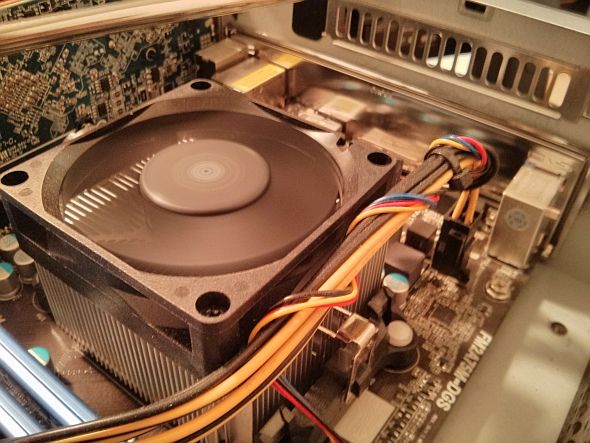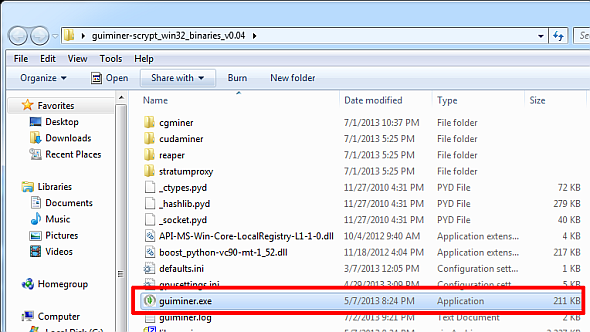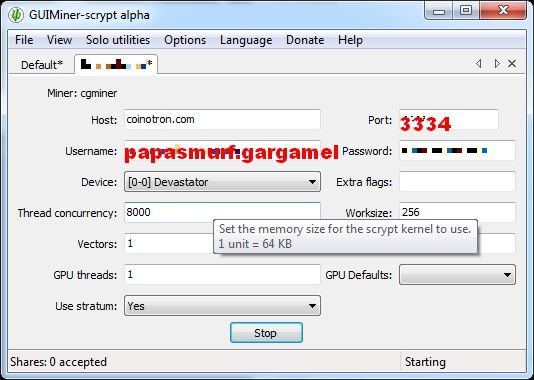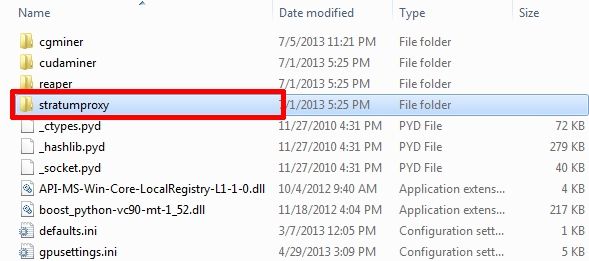If you missed the Bitcoin mining craze and still want to get in on pick-axing a virtual currency, you’re in luck! In 2011 Litecoin established itself as a major player within the world of electronic money, gaining prevalence when Mt. Gox announced plans to trade in it. The new currency operates on the same principles as other cryptographic coinage, where miners solve cryptographic puzzles and receive Litecoin when a "block" is solved.
The big difference between Litecoin and Bitcoin lies in Litecon's Scrypt-based design. Scrypt, unlike the underlying technology behind Bitcoin, provides several advantages: First, you don't need a specialized ASIC miner to produce Litecoin. Second, it provides better security against attack. Additionally, Litecoin's design pays out over four times as many coins as Bitcoin and its transactions are almost five times faster.
Getting started with Litecoin is extremely easy. Simply install and run the Litecoin client, register with and configure a mining pool and then run your mining software.
Will I Actually Earn Any Money?
Whether or not you earn any actual money depends on three primary barriers: First, the places where Litecoin is accepted are quite few and your idea of profit may require that it gain wider acceptance. Second, your hardware and power costs may not allow for profitable mining, depending on your region and component costs. Third, the price of Litecoin could plummet in the future which would make it not only a complete waste of your time, but also possibly a waste of hardware.
In short, whether or not you make a profit depends on the future value of Litecoin and the wattage requirements of your system VS its ability to solve cryptographic puzzles. My mining rig couldn't hit more than 175 KH/second due to an unknown configuration issue. This causes some disappointment, because properly configured my rig should hit about 250 KH/s. Its low-wattage requirements, at 200-250 watts at max draw, makes it fairly efficient for mining Litecoin.
You can find the hashrates of most CPUs and GPUs on this page. If you’re interesting in calculating your profitability, check out this page – the author does a complete return on investment (ROI) analysis, which the fastidious can apply to their own rigs. Another handy tool to have is a mining calculator, which suggested either BBQCoin, Litecoin and Feathercoin as the most profitable cryptocoins for me to mine. I went with Litecoin because of its growth potential.
Another handy article to read is Danny’s breakdown of the most efficient GPUs for mining Bitcoin.
Below is my Dual Graphics Radeon 6670 + A10-5800K miner rig:
Background and What is Litecoin
Litecoin developed as a potential successor to Bitcoin, soon after Bitcoin began its explosive rise in value in 2011. While it never matched Bitcoin’s popularity, it’s regarded as the silver to Bitcoin’s gold. As mentioned earlier, it uses the Scrypt hash function to create hashes, which means the ASIC miners that devastated GPU mining’s feasibility have not been developed for it. That will not last, however, if Litecoin becomes popular.
For most users, making money mining Litecoin requires joining a "mining pool", which coordinates the hashing efforts of all the computers within the pool. There are various pay-out options for whenever a block is solved.
Another key consideration is whether or not you plan on mining using your CPU or GPU. The software used in this article, GUIminer, only uses the GPU by default. However, many other kinds of software exist, such as CPUminer. It's important to note, however, that GPU mining is far more efficient than CPU mining.
Getting Started: How-to Mine Litecoin
There’s a huge variety of resources available for those considering Litecoin mining. It differs little from mining Bitcoin, in that you require the following three items:
- A client, which syncs your computer with the Litecoin network. The client is referred to as the “Wallet”.
- An account with a “mining pool”, which coordinates individual miners efforts toward solving a hash. There are many mining pools out there – this tutorial recommends using Coinotron.com, which was extremely easy to get started with.
- Mining software, which solves the cryptographic puzzles. I used GUIminer, on Danny Stieben’s recommendation. It has its quirks but overall simplifies the mining process. I highly recommend using Danny’s guide.
After acquiring those three items, start setting it up. It took me about 15 minutes to go from finishing the syncing process to mining Litecoin.
Step 1: Setting up the Litecoin client: Setting up your Litecoin Wallet only requires that you download and install the client software. After installing, it will attempt to sync your Wallet to its network, which will take a few hours. After it syncs you can move onto the next step.
Step 2: Register and configure with a mining pool: In this highly effective tutorial, the author suggests using Coinotron.com. The setup process is pretty straightforward. Sign up for an account and then add a machine to your account.
Adding a "worker" requires that you input a password and your username, including the name of the machine. For example, if your user name with Coinotron is "papasmurf" and you designate your machine as "gargamel", your machine's username will be "papasmurf.gargamel", which you will enter in GUIminer, later on. Be aware that the screenshot below is a bit off — "papasmurf" is the username and "gargamel" is the name of the mining rig.
The password can be anything you want it to be — just remember to record this password, because you will input it into GUIminer in the next step. Finally, hit the "add" button, which is located to the right. Also make sure the coin denomination is "LTC" and not "BTC".
Step 3: Run GUIminer: Running GUIminer may require that you add it to your list of excluded processes in whatever virus scanner you use. For example, in Microsoft Security Essentials, I just clicked on the settings tab and in the left pane went to "Excluded processes". Don't worry it's not a virus.
GUIminer isn't an installed program. You actually have to locate it from within its unzipped and downloaded folder. It's called "guiminer.exe".
After activating the program, you must enter in the following data, except input your username and password as indicated above:
For example, if your username was "papasmurf" and your machine's (or worker's) name is "gargamel", you would enter "papasmurf.gargamel", without the quotation marks. Also, if you elected to use the Coinotron mining pool, make sure you enter "3334" for the port number.
Finally, you'll want to turn on the Stratum Proxy and enable it in your settings.It will allow your miner to perform more efficiently. Simply locate the Stratum executable in your GUIminer folder and run it. For additional Stratum configuration tips, check out this site.
When finished, hit the "Start" button from within the GUIminer interface and the mining will begin in a few seconds.
Conclusion
Mining Litecoin can be profitable if your power and equipment costs are eclipsed by your mining rig's hashing ability plus the present value of Litecoin. This is profitable because ASIC miners haven't yet entered the Litecoin marketplace. To get started, simply install the Litecoin software, register with and set up a mining pool, and then start mining. It takes no more than a half hour or less to properly set it up.
Anyone else mining Litecoin? Let us know in the comments.









